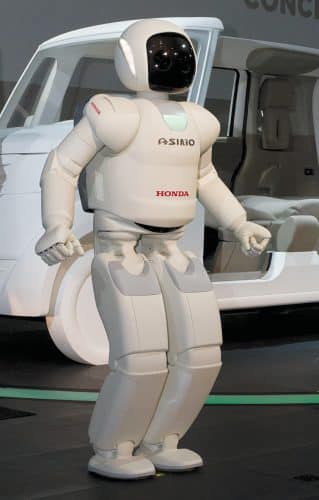Creating a human-like or humanoid robot is difficult because it is quite a complex process. And yet, people continue to develop humanoid robots because these are used in numerous applications such as personal assistance, scientific research, entertainment, hospitals, etc. This article covers ten humanoid robots that would potentially revolutionise the robotics industry.
You might have come across the article “The man who made a copy of himself” in various media publications. As per the article, a Japanese roboticist named Hiroshi Ishiguro is building androids to understand humans—starting with himself. For this project, he has built Geminoid robots that very closely resemble specific human models. The goal is to study various aspects of engineering, cognitive science, and neuroscience to investigate research topics. These could be useful for research on how people interact with artificial intelligence (AI) robots and what differentiates people from the machine.
Creating a human-like or humanoid robot is difficult because it is quite complex, and a lot of research work is required. And yet, people continue to develop humanoid robots because these are used in numerous applications such as personal assistance, scientific research, entertainment, education, automotive manufacturing line, hospitals, and greeting guests and visitors. First-grade sensors and actuators, computing power, programming, etc, are very important in building a humanoid robot, and a small mistake could result in a simple to major glitches. Almost all modern humanoid robots employ some form of artificial intelligence (AI) technology. Therefore high R&D investments and high cost are major factors for the growth of the humanoid robot market.
As per a report by Global Market Insights, humanoid robot global market size is expected to grow at a CAGR of over 35 per cent from 2017 to 2024. The global shipments are expected to reach one million units by 2024.
In another report by Research Dive, the global humanoid robot market is expected to reach 9,630 million dollars by 2026 at a CAGR of 36.4 per cent, increasing from 803.7 million dollars in 2018. The global market has been dominated by the North America region and is projected to account for 3,052.7 million dollars at the end of 2026.
Some of the key players in the humanoid robot market include SoftBank (Japan), ROBOTIS (South Korea), Honda Motor (Japan), UBTECH Robotics (China), Hanson Robotics (Hong Kong), PAL Robotics (Spain), Toyota Motor (Japan), Istituto Italiano di Tecnologia (Italy), Engineered Arts (UK), Robotics Lab (Spain), and National Aeronautics and Space Administration (NASA, US).
This article covers ten humanoid robots that would potentially revolutionise the robotics industry.
1. First humanoid robot
Herbert Televox (Fig. 2) was the first humanoid robot built by Ron Wensley in 1927. The robot could lift the handset to receive a telephone call and control simple processes by operating switches according to the signals it received. While the robot could not speak when it was first created, it later learnt to say two simple sentences. This was the beginning and starting point for the developmental process.
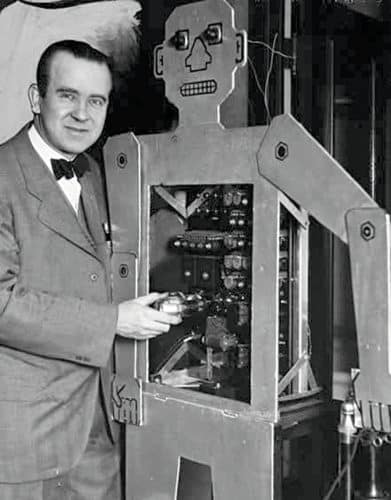
2. First social humanoid robot
Pepper (Fig. 3) is the world’s first social humanoid robot that can recognise faces and understand basic human emotions. It was manufactured by SoftBank Robotics and introduced in 2014. Pepper can engage with people through conversations and touchscreen on the chest. The touchscreen on its chest displays messages. It also has a speech recognition feature and can speak in fifteen languages, including English, French, Spanish, German, Italian, Arabic, and Dutch.
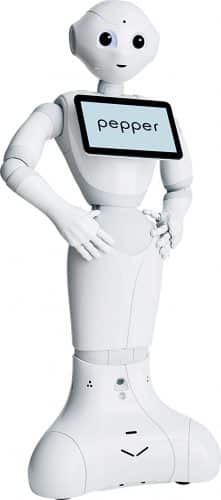
3. First humanoid robot citizen
Sophia (Fig. 4) was the first robot to receive citizenship in a country (Saudi Arabia) in 2017. It was developed by Hong Kong-based company Hanson Robotics in 2016. It imitates human gestures and facial expressions, and is able to answer certain questions and make simple conversations on predefined topics. In 2020, Sophia visited the City of Joy, Kolkata, after touring 65 countries. This was Sophia’s second visit to India. She first visited India in 2017.
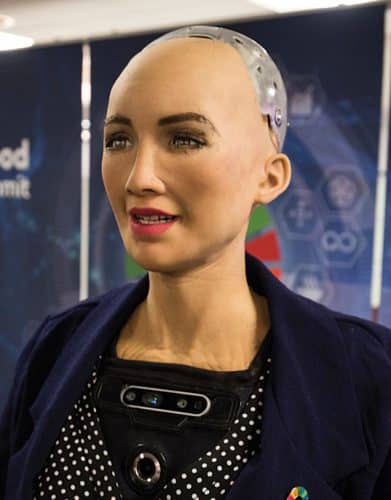
4. First news anchor AI-robot
Qiu Hao, a lifelike image male news anchor (Fig. 5), was developed in 2018 by Xinhua and the Chinese search engine Sogou. It uses machine learning (ML) to simulate the voice, facial movements, and gestures of real-life broadcasters. It can work continuously and tirelessly. This AI technology is not only limited to news presenting but can also be customised to different applications in other industries.

5. First robotic avatar
FEDOR and T-HR3 (Fig. 6) were among the first avatars introduced in 2017 by Russia and Japan, respectively. FEDOR avatar robot is able to replicate the movements of a remote operator and perform some actions autonomously. It was sent on an experimental mission to the International Space Station in 2019.
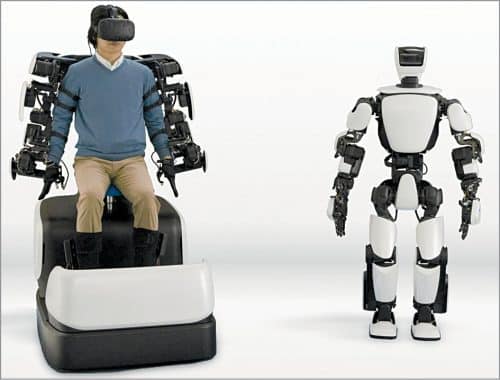
T-HR3 is the third generation humanoid robot from Toyota, Japan. It is controlled from a master maneuvering system that allows the entire body of the robot to be operated remotely. The master system may include wearable devices to control movements of the robot and a head-mounted display that allows the operator to see from the robot’s perspective. That is, it can mimic the movements of its human operator like a real-world avatar.
In future, these humanoids will be able to perform surgeries while operators (human doctors) will be controlling them from another part of the world. These can also be used by caregivers to work with patients remotely. Avatar robots could change the way people interact and work.
6. First delivery humanoid robot
A two-legged robot called Digit (Fig. 7) from Agility Robotics was announced in February 2019. It is approximately the size and shape of a small adult human. It has advanced feet that allow it to balance on one foot, or carefully navigate through obstacles with both legs. It can navigate environments semi-autonomously with the help of LiDAR and other sensors, enabling it to perceive and map the world for navigation. It can carry boxes up to 18kg in weight in its arms. It can be used in many areas, including logistics, warehouses, telepresence, and industrial inspection.
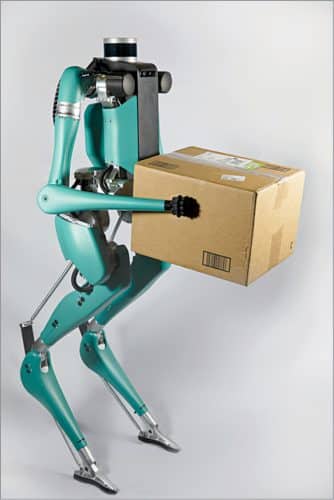
7. First virtual artificial humans
Neon (Fig. 8), a humanoid artificial intelligence (AI) avatar designed by Samsung’s STAR Labs, looks like a human and can respond to questions. It is basically a next-generation AI video chatbot with a human face and personality but not exactly an AI assistant. You can imagine something like Siri or Alexa with a virtual face that could start a conversation. It interacts with humans along with expressions such as a smile or a raised eyebrow. It is still under development but could be the next big thing in the future for use in many fields, including retail, tourism, collaboration, healthcare, among others.

8. First robonaut
A robonaut (Fig. 9) is a humanoid robot for the astronauts. The first-generation robonaut was designed by the Robot Systems Technology Branch at NASA’s Johnson Space Center. The core idea behind the robonaut is to have a humanoid machine work alongside astronauts. Many countries are working on their own robonauts for space exploration. In India, Vyommitra, a female humanoid robot, is set to launch on an uncrewed spaceflight in December 2020.
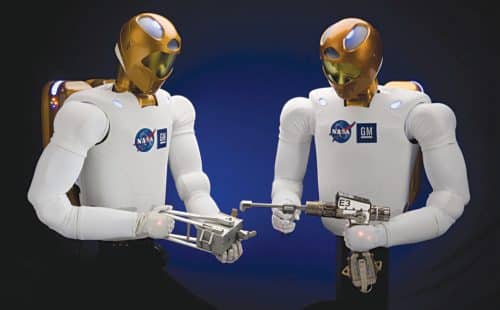
9. First humanoid nurse robot
Human-like robots are already being utilised as healthcare workers in elderly homes in countries like Japan. There are many robotic nurses deployed in some hospitals, but humanoid robotic nurses are few.
In 2018, three robot nurses were used to help medical staff in a hospital in Bangkok. Dressed in a nurse’s uniform, the robot nurses used to deliver medical documents between departments.
In India, recently, a Coimbatore-based startup has developed an autonomous self-driving humanoid robot named Dokat Aura (Fig. 10). It is the first humanoid robotic nurse developed in India that is used to help in supplying food and medicines to isolation wards, and is being found very useful in hospitals treating Covid-19 patients.
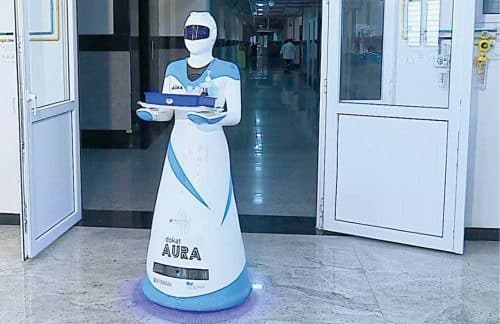
10. Most advanced humanoid robot
ASIMO (Fig. 11) is the most advanced humanoid robot in the world to date. Developed by Honda Motor Company, ASIMO stands for Advanced Step in Innovative Mobility. According to its website, ASIMO is the first humanoid robot in the world that can walk independently and climb stairs. In addition, it can also understand preprogrammed gestures and spoken commands and recognise voices and faces. It has arms and hands to perform activities like turning on light switches, opening doors, and carrying objects.
